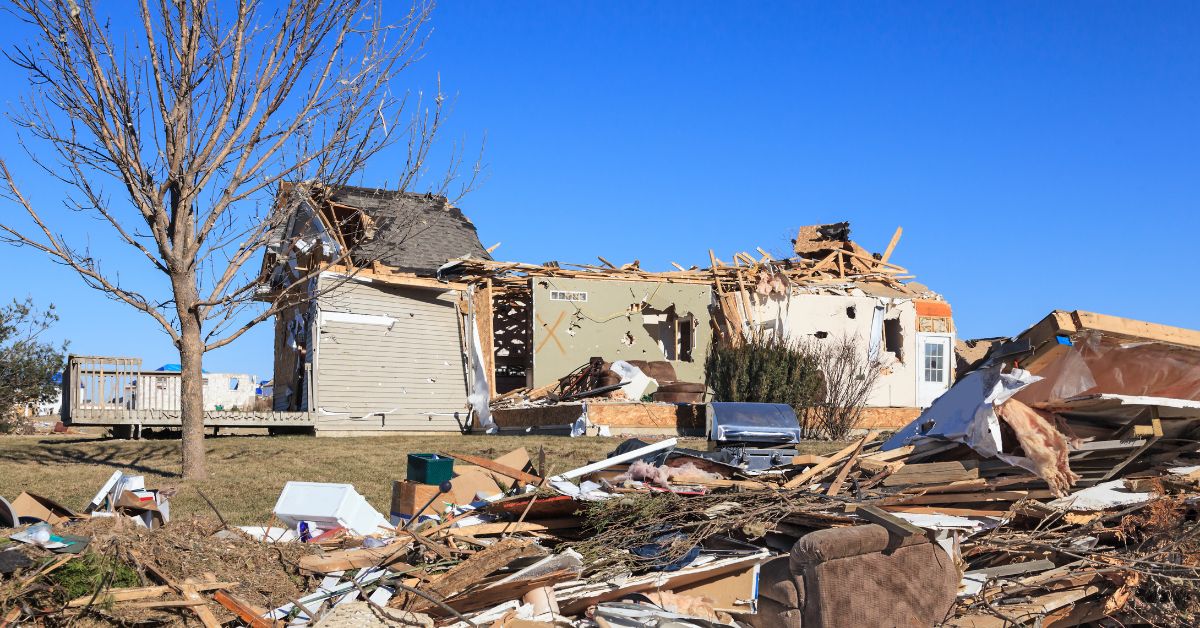Disaster Relief for Taxpayers
As Florida begins the recovery process from Hurricane Ian, Puerto Rico deals with the effects of Hurricane Fiona, and California continues to suffer from wildfires, we find ourselves in the…
June 24th, 2024

Unfortunately, natural disasters are all too familiar in the United States. Each year, severe storms, wildfires, hurricanes, and tornadoes occur nationwide, leaving affected taxpayers in challenging situations. Following a natural disaster, the IRS issues a notice informing taxpayers of the relief available for those impacted by the disaster. Let’s review the disaster tax relief provisions, in case we or our clients find ourselves affected by a disaster.
To qualify for relief from a federally declared disaster, individuals and business entities must be considered affected taxpayers. Therefore, the first hurdle in determining who is affected is the presidential declaration of a federal disaster area. Affected taxpayers are not limited to those who live and conduct business in the area. They also include taxpayers whose records required for meeting a filing or payment deadline are in the disaster area, even if the taxpayers themselves are not located there. For example, affected taxpayers may qualify because they use a tax preparer in the disaster area who cannot file or pay on their behalf.
Taxpayers should review the relief guidance issued by the IRS regarding a disaster. The guidance often lists the counties in the state(s) where the disaster occurred to help taxpayers determine if they qualify for the relief.
The IRS offers relief for taxpayers affected by disasters to alleviate their federal tax burdens. The relief often comes in the form of extensions and penalty abatements and may cover income, excise, and employment tax returns. Relief may also include extensions for contributing to traditional or Roth IRAs. Additionally, installment payments due during the disaster relief period are suspended until the month following the end of the relief period.
The IRS may specify a period of no longer than one year to determine the interest, penalty, additional amounts, or additions to tax, as well as any credits or refunds. There is a mandatory 60-day extension for qualified taxpayers starting when the declared disaster begins. If any filing or payment deadline is extended or postponed, the IRS publicizes the extension and issue a news release, revenue ruling, revenue procedure, notice, announcement, or other guidance. The best resource is on the IRS website, Tax Relief in Disaster Situations, to check for any postponements impacting you or your clients.
Let’s take the recent relief granted to taxpayers in Ohio affected by tornadoes that began on March 14, 2024, as an example.
The relief delayed various tax filing and payment due dates between the postponement period of March 14, 2024, through September 3, 2024. Accordingly, affected taxpayers have until September 3, 2024, to file returns and pay any taxes originally due during this period, including the following:
Additionally, penalties for not making the required payroll and excise tax deposits due on or after March 14, 2024, and before March 29, 2024, are abated if the deposits were made by March 29, 2024.
Taxpayers needing additional time beyond the September 3, 2024, postponed deadline, can file for an extension before this date to extend their filing deadline to October 15, 2024. However, the extension will only be for additional time to file and will not extend the payment deadlines.
The IRS automatically provides relief to taxpayers with an IRS address of record located in the disaster area. Accordingly, taxpayers don’t need to contact the IRS to get relief. Typically, the address of record comes from a filed tax return. If you have a client who moved into a disaster area and has not filed a return yet, consider filing Form 8822, Change of Address, or calling the IRS to update the records.
Taxpayers qualifying for relief living outside the disaster area must contact the IRS. This includes taxpayers whose records are in the disaster area and relief workers affiliated with a recognized government or philanthropic organization. The IRS also offers options for disaster area tax practitioners with clients located outside the disaster area to identify taxpayers qualifying for relief.
Taxpayers who lost their records during a disaster can get free return transcripts using the IRS’ Get Transcript tool online. Taxpayers can also request copies of prior tax returns by mail by filing Form 4506, Request for Copy of Tax Return, and writing the disaster designation in red letters at the top of the form to expedite processing and waive the user fee.
Losses from a federally declared disaster are reported on Form 4684, Casualties and Thefts. The FEMA declaration number must be provided on the form. You can look up FEMA declaration numbers at www.fema.gov/disaster. Generally, the disaster year is the year of the disaster (makes sense), although it can be the subsequent year if the loss cannot be ascertained with reasonable certainty until after the disaster year.
For losses during the TCJA period, taxpayers can claim an increased standard deduction using Schedule A, Itemized Deductions, even if they aren’t itemizing deductions on their return.
Taxpayers usually deduct their losses in the disaster year, but it’s possible to amend prior year returns and treat the disaster as occurring in the previous year to receive a quicker refund. The election to take the loss on the preceding year is made on Form 4684 within six months of the regular due date for filing the original return (without extensions). The taxpayer should file the amended return with the appropriate disaster information so the IRS can expedite processing the amended return. For example, a taxpayer has until October 15, 2024, to file a 2022 amended return claiming a disaster loss from 2023. Practitioners should review the IRS page for clients who might qualify.
Disasters impact many states each year. If you or your clients are affected by a disaster, understanding the available tax relief can help alleviate some stress and offer reassurance during a challenging time.
By Ashley Akin, CPA
Sources
Stay up-to-date!
SIGN UP FOR EMAIL NOTIFICATIONS
Disclaimer: The information referenced in Tax School’s blog is accurate at the date of publication. You may contact taxschool@illinois.edu if you have more up-to-date, supported information and we will create an addendum.
University of Illinois Tax School is not responsible for any errors or omissions, or for the results obtained from the use of this information. All information in this site is provided “as is”, with no guarantee of completeness, accuracy, timeliness or of the results obtained from the use of this information. This blog and the information contained herein does not constitute tax client advice.
Join 2,200 of your colleagues and get notified each time a new post is added.